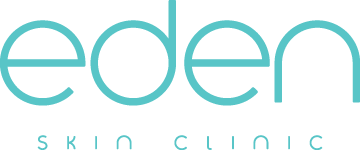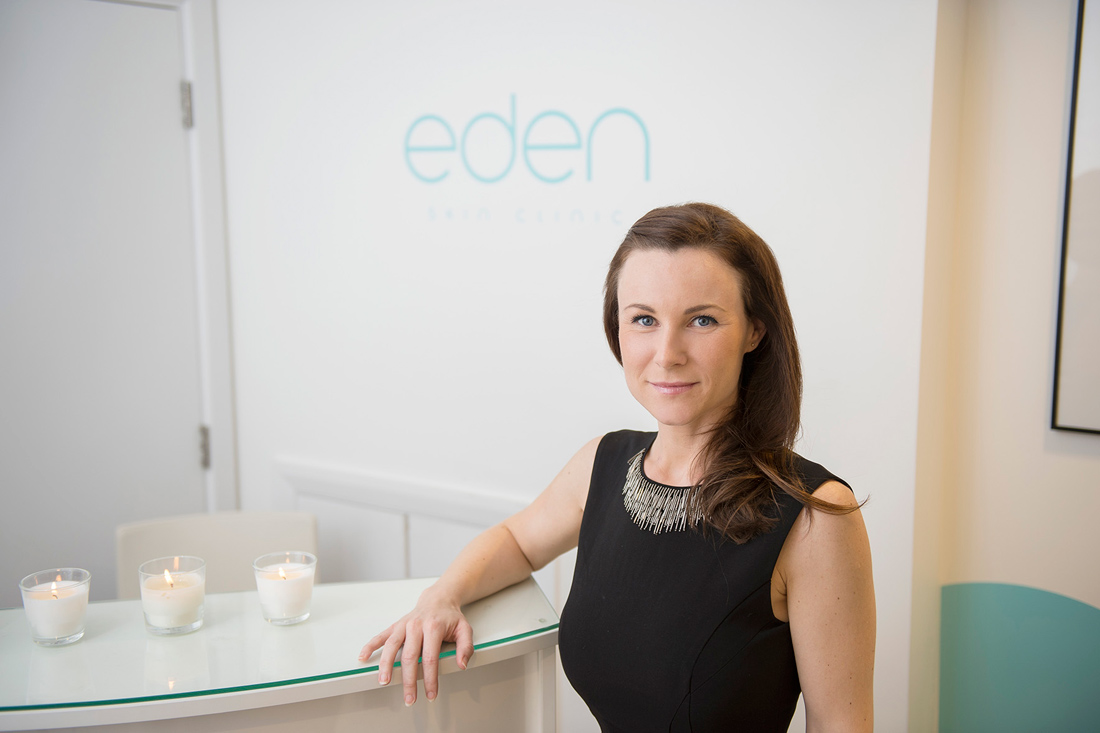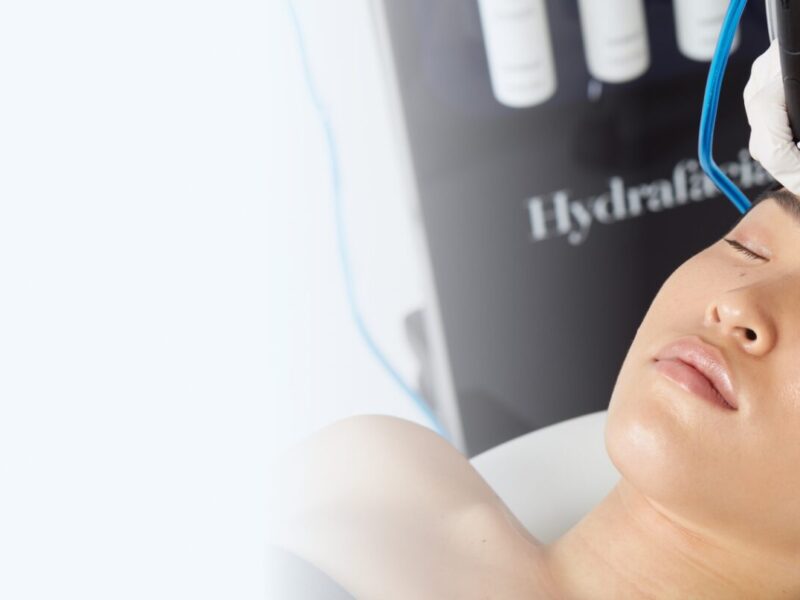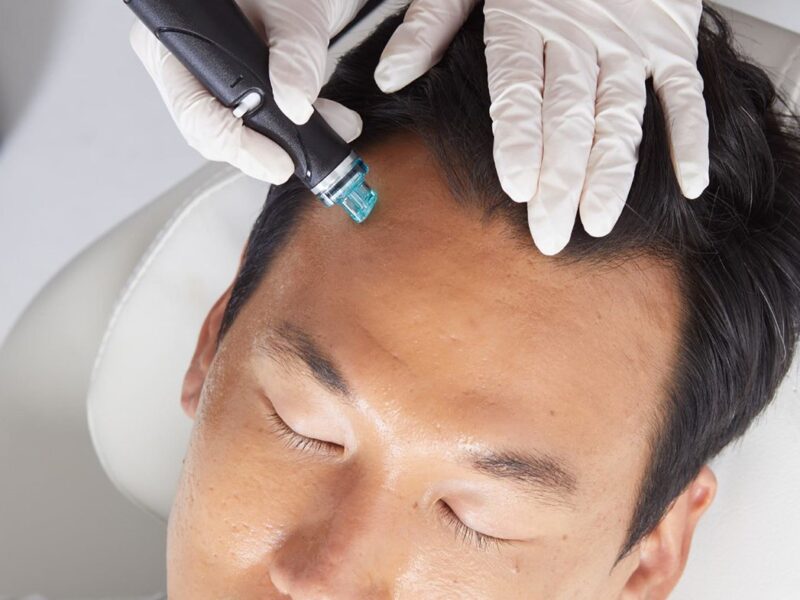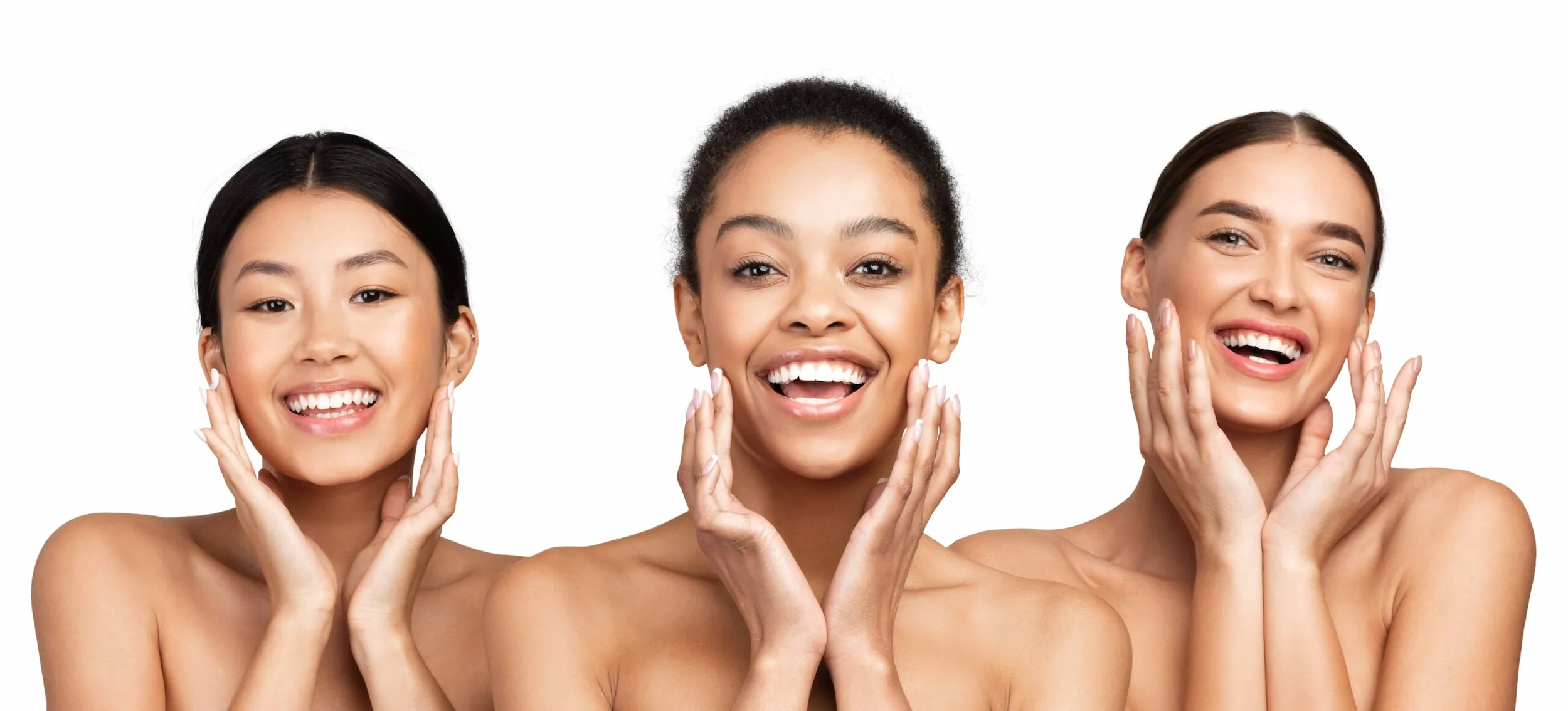Exfoliation 101: What to buy, how to use it, and when to ditch it!
Whether you’re an exfoliating-novice or a bona fide enthusiast, read on to learn more about exfoliating with a speedy seminar from Eden Skin Clinic’s ‘skincare professors’… Correction, skincare professionals!
What is exfoliating and why should I do it?
Your skin, like the rest of the body, operates on a cycle, shedding dead skin cells to make room for new ones roughly every 30 days. Sometimes, these cells don’t slough off completely on their own. For some people, this may result in dry, textured patches or for others, the skin cells can clog pores, giving them an enlarged appearance and causing congestion. This is where exfoliation comes in.
Exfoliating can prevent this and in turn help to improve the texture and tone of the skin, revealing brighter new skin beneath. This process also stimulates the production of collagen, which has anti-aging and overall rejuvenation benefits. Additionally, it will help to improve the effectiveness of your other skincare products – think about it; if your topical products don’t have to work to penetrate those dead layers, they can work at a deeper level right away. Essentially, exfoliating will help to level-up your skincare routine!
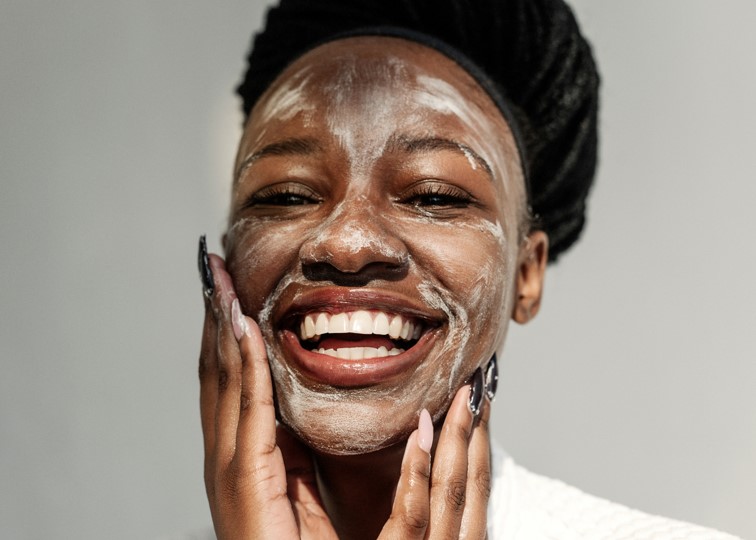
How many kinds of exfoliators are there?
Exfoliators can be broadly broken down into two broad subcategories: physical exfoliants and chemical exfoliants. Most skin types can benefit from a combination of both in their routine.
Physical exfoliants are perhaps the one most people are more familiar with. These are products which contain small granules which are rubbed across the skin before being removed. As these particulates are moved across the surface of the skin, they scrub off layers of dead skin. These exfoliating beads may be naturally or artificially derived and can include rice, coffee grounds and salts, amongst others.
Chemical exfoliants may sound a little scary, but these are truly nothing to be afraid of – in many cases, when used correctly, they are actually the gentler option! Chemical exfoliants simply means that the exfoliation is achieved not through manual scrubbing but through the topical application of acids which prompt layers of dead skin cells to shed.
Most products will be one or the other, but you can purchase some which are a mixture of both!
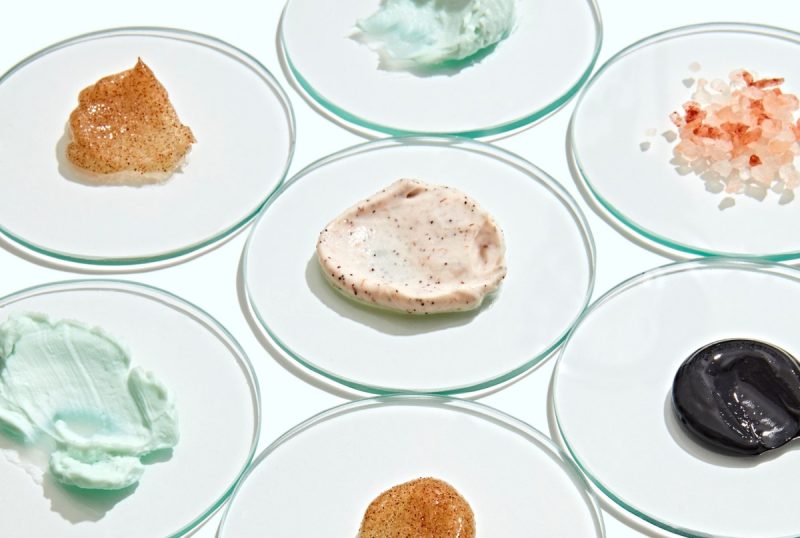
How can I find the right exfoliator for me?
So, armed with all this information, how exactly can you navigate a product range to find the right exfoliator for you? We felt that perhaps the easiest way to show you is through a series of case studies with the AlumierMD product range, which is the medical-grade skincare line that we use ourselves in-clinic. You can also purchase it online through your local Eden Skin Clinic branch!
Physical Exfoliants – the Lotus Scrub and MicroDerm Polish
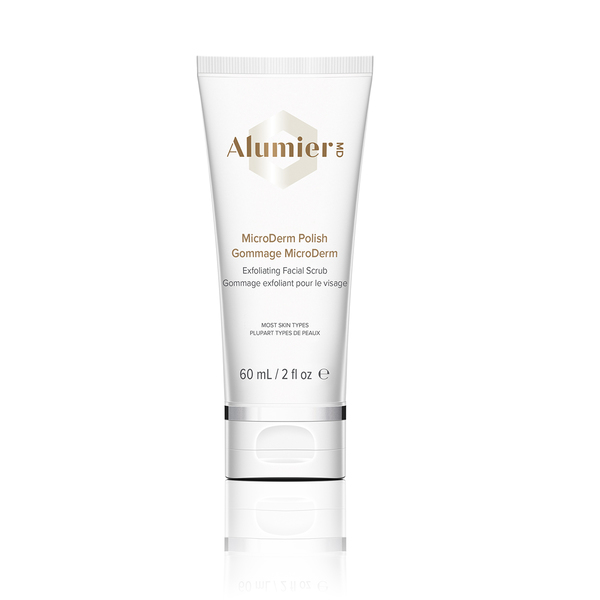
What are they? As mentioned, physical exfoliants are usually the form that most people are more familiar with. Lotus Scrub and MicroDerm Polish are mechanical exfoliants, which use small granules to remove impurities from the surface of the skin. The Lotus Scrub contains lotus-seed powder and plant cellulose whilst MicroDermPolish uses silica and jojoba esters, so both of their exfoliants are naturally derived and biodegradable, meaning no ‘nasties’ will be washed down the sink!
Who should use these? One of the advantages of physical exfoliants is that they are easy to use and to work into your routine, unlike some chemical exfoliants which may not be able to be used in conjunction with other ingredients or have to be adjusted to gradually. They are also useful in summer as they are not as photosensitising. Physical exfoliants can be particularly useful for people with oily skin, which tends to be less sensitive. They’re also great for use on the body if you notice any bumpy or textured skin.
How do I use them? Typically, you’ll want to use a physical exfoliant just once or maybe twice a week, we suggest at night-time. Usually, you will apply to damp skin so that there is a little more slip and gently massage over your face using your fingertips. Then you should rinse thoroughly with lukewarm water until none of the scrub is left on your skin. If your skin is more sensitive or you are new to using such products, you can mix it in with a gentle cleanser for your first couple of uses.
When should I avoid them? Some physical exfoliants can be too harsh on the skin and damage the natural barrier. Rough scrubbing particles such as those derived from walnut shell have jagged edges which can cause microtears. You’ll want to ensure that the physical exfoliant you use contains smooth, spherical particles such as those mentioned by AlumierMD, to avoid this. If your skin is particularly dehydrated, it’s important to follow up with a hydrating serum before your moisturiser. You may find that if you have very dehydrated skin or are prone to conditions such as acne and rosacea, that the manual scrubbing can sometimes irritate the surface of the skin. When your skin is feeling sensitive, you should avoid using your physical exfoliants until your skin has recovered.
Chemical Exfoliant (Take Off) – Enzymatic Peel
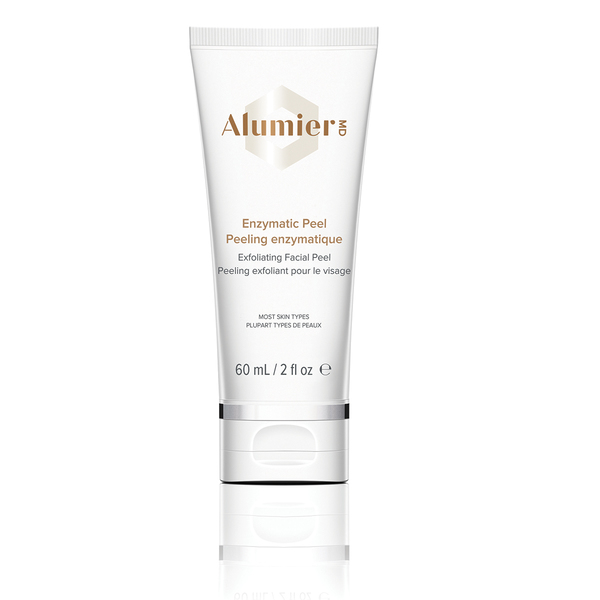
What are they? We’ve chosen to break chemical exfoliants down into two further sections, those you remove and those you leave on. Chemical exfoliants which you remove after use tend to come in the form of potent treatment masks or peels – these may contain higher percentages of active ingredients than those which stay on the skin, but not always. Enzymatic Peel contains 10% lactic acid as well as fruit enzymes which work together to remove dead skin cells and promote cell renewal, working against pigmentation and the early signs of aging.
Who should use these? These powerful exfoliants are great for use between your advanced skin treatments with the clinic, to help prolong your results. AHAs like lactic acid, contained in this product, are excellent for dry skin types experiencing flakes and patches. Lactic acid is also a great choice for those with pigmentation or anti-aging concerns, and is milder than other AHAs, making it a good choice for sensitive skin too.
How do I use them? In the case of the Enzymatic peel, you should apply a thin, even layer to freshly cleansed skin with either your fingertips or a brush, during your evening routine. You should leave on for no more than five minutes. We recommend starting slowly to build your tolerance: initially leaving on for just two minutes then working your way up. It is normal for the skin to feel tingly and also to appear quite pink. You should remove thoroughly with lukewarm water, ensuring that no product is left on the skin. You should only use around once a week, or as advised by your therapist.
When should I avoid them? When products contain higher percentages of ingredients, you must ensure that you are always following the instructions and guidelines given by the packaging and your therapist. They deliver impressive results but don’t be tempted to over-use, as you can actually damage your skin in doing so. These products do cause photosensitivity so you must always wear sunscreen and may want to avoid use in summer if you’re anticipating prolonged sun exposure. We would also suggest not using them too close to special events, especially if the product is new to you!
Chemical Exfoliant (Leave On) – Bright & Clear Solution and AHA Renewal Serum
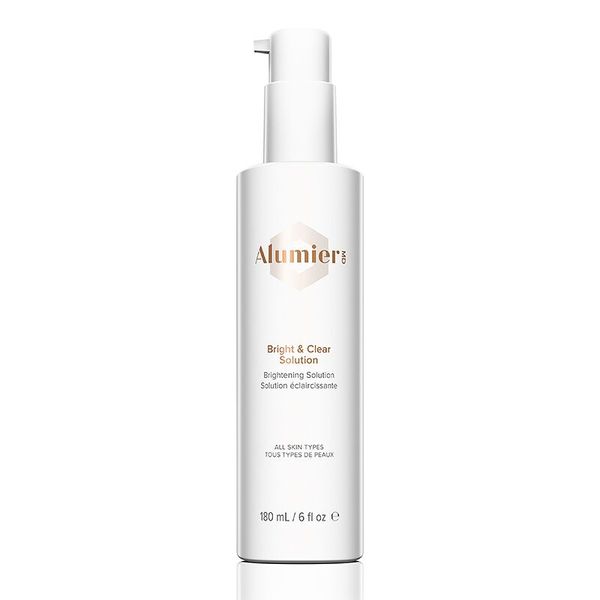
What are they? Our final section may come as a surprise, but there are a wide range of exfoliants which do not need to be removed from the skin. They work differently from scrubs and masks, instead working gradually over time. They come in many different formats but two of the most common are in ‘tonics’ or ‘toners’ like Bright & Clear Solution or as treatment serums like AHA Renewal Serum. Both formats have different benefits, depending on your skin type and routine.
Who should use these? With skincare, consistency is key and that’s where these sorts of formulas have the edge. Whilst they may sometimes contain lower percentages of active ingredients, these should not be dismissed as less efficacious. This very trait enables them to be used everyday, helping to keep results going, especially as they can be used in conjunction with occasional peels. This also makes them more suitable for sensitive skin as they will not be as irritating as intense formulas nor do they require abrasive scrubbing. Moreover, these products will often contain other beneficial ingredients to target specific skin concerns and balance the formula.
For instance, the AHA Renewal Serum, which contains lactic acid, also has ingredients like arnica and green tea, to soothe the skin, and vitamin B5 and hyaluronic acid to replenish moisture, making it a great choice for those seeking hydration and anti-aging benefits. Bright & Clear Solution, on the other hand, contains lactic acid and salicylic acid. It’s particularly suitable for oily, congested and acne prone skin types as salicylic is oil-soluble, helping it to penetrate blocked pores. Because of this, it also contains vitamin C to help with residual pigmentation caused by acne scarring.
How do I use them? Bright & Clear solution has a liquid texture and should be dispensed onto a cotton pad and wiped across freshly cleansed skin, morning and/or evening. You can follow this with your serums, moisturisers and sunscreen. Another benefit to this format is that if you have slightly sensitive skin, you can dilute the solution with water to minimise sensitivity. AHA Renewal Serum has a slightly thicker texture and should also be applied to clean skin during your evening routine only and gently massaged in with the fingertips. Again, follow with serums and moisturisers. Even though AHA Renewal Serum is used at night only, you must still wear SPF during the day due to the increased photosensitivity.
When should I avoid them? As mentioned in the previous section, you must always wear SPF of at least 40+ when using chemical exfoliants and may want to avoid use, or reduce frequency of use in summer. Though the majority of these products are safe to be used everyday, you can still overuse them, so it’s important to always follow the advice of your therapist. It is also important not to mix and match too many exfoliants at once as this can strip the skin. You should also be mindful of expiry dates. Some chemical exfoliants can become less effective or potentially even irritating if used after their expiry so make sure you keep an eye on your products for any changes in smell, texture and reaction on the skin.
Want to chat with us about the AlumierMD product line and find the right exfoliant for you? Ask your therapist in-clinic today. Remember, even if you don’t live near an Eden Skin Clinic branch, our experts are offering free video consultations over Zoom regarding the AlumierMD product line. We’d be happy to arrange one for you so please do email us at hello@edenskinclinic.co.uk.
